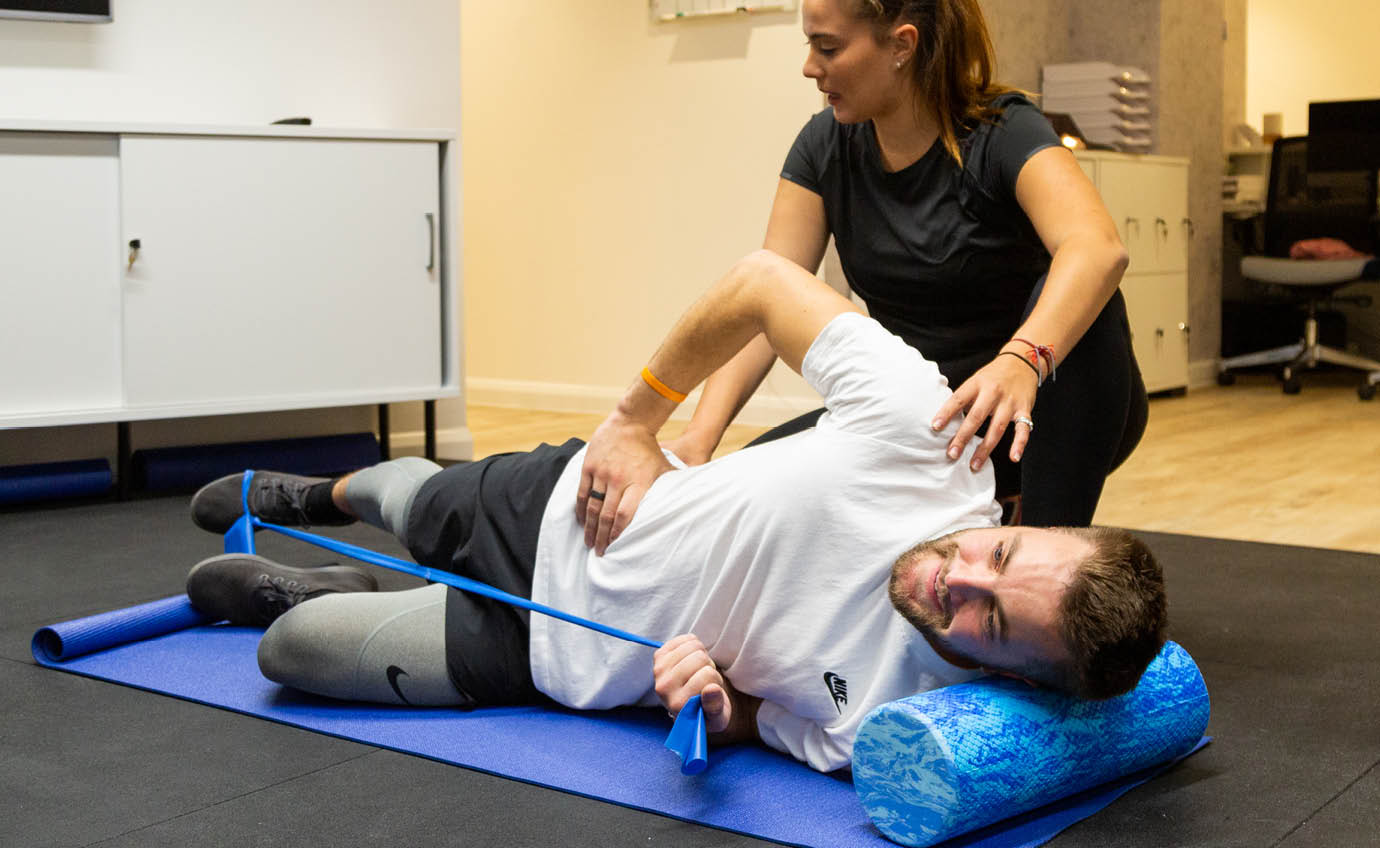The past couple of years have seen us working in ways and places we’d never envisaged before. The kitchen bench, dining room table, sofa (and on a really bad day, maybe your bed!) have all had their time as a makeshift desk, while offices were closed at various points throughout the pandemic. These places around your home may have been the most convenient, short-term options, but given flexible working looks to be here to stay, setting up a more permanent, and ergonomic, home office is crucial for postural health. Plus, as many of us begin to make the transition back to spending a few days a week in the office, understanding how to set up multiple desks that are all equally kind to your back and neck is key.
Back and neck postural issues won’t always stay confined to the one place — spinal pain from twisting or straining can be referred into your shoulders and elbows, leg and arms and even cause chronic headaches. So if you’re suffering from pain in any of these areas and can’t pinpoint a specific time you injured yourself, cast your mind back to when the pain first started. Did you get a new job, move offices or maybe just start working in a different place? Chances are, the pain you are feeling is a slow burn caused over time from a poor desk setup.
So, here are our top tips for ensuring your office space (or spaces!) are ergonomic and keep you postural pain-free.
1. Set up your chair correctly
First up, buying a decent office chair is a must! Sitting upright on a hard kitchen chair, or sliding into your sofa might feel good in the short term, but over time you’ll find that you’ll most likely start to feel aches and pains in all sorts of places.
Once you have an appropriate chair, making sure that it’s at the correct height for your desk or table is the most important thing to get right. When testing it, sit up straight, with your feet flat on the floor and sit back into the backrest — if you’re perching forward in the chair, or starting to slip forward it likely means that your chair is too high for you. Conversely, if your knees are bent higher than your hips causing your back to curve, then the seat is too low. Think like Goldilocks and adjust it until it’s juuuuust right!
2. Sit in the chair properly
Okay, so the chair is set up correctly, now you need to make sure you consistently sit in it properly. If you lean back or push the chair out too far away from your desk you’ll find yourself constantly leaning or reaching forward to type, which puts you back to square one! A good test for this is that you should be able to lock your elbows in at your sides and still be able to reach your keyboard and mouse without overextending your arms.

Position your screen straight on
When it comes to a good desk setup, symmetry is important. Whether you have additional screens or just the one, making sure you are facing them straight on will save your neck from repetitively straining in one direction, over and over again, which will eventually create issues for you. If you do have a multi-screen situation going on, make sure the screen you spend the most time looking at is in front of you, and swivel your chair to keep your back in a good position rather than twisting your body.
Avoid “Mouse Arm Syndrome”
Mouse Arm Syndrome is a repetitive strain injury that normally causes pain, tightness or swelling in your hand, elbow or shoulder, but it can even be the culprit behind neck tension or headaches too. It commonly occurs if your mouse is positioned too far away from you and you’re constantly over-reaching, which leads to strain and tension. An ergonomic mouse and making sure you’re correctly positioned at your desk will go a long way to preventing Mouse Arm Syndrome, but if the damage has already been done, physio treatment may be the way to go.
Strengthening exercises for your entire arm will be key, and may be combined with manual therapy and dry needling treatment to release tension and loosen you up. At Spectrum, we also offer Shockwave therapy in our London clinic, which is brilliant for breaking up scar tissue, forming new blood vessels and helping the tissue re-heal to become stronger and more flexible.

Get a professional desk assessment
Another way Spectrum’s physio can help ensure your desk setup is perfect for you is through a professional desk assessment. We offer live desk assessments either via Zoom or in-person, or you’re welcome to bring in photos of you at your desk to your next appointment for us to assess. It’s particularly important that you know how to set your desk up properly (as we mentioned at the start) if you are switching between a home office and going back to your company’s office and are dealing with a variety of different desks, chairs and screen setups. The more variables at play, the more likely you are to find yourself sitting uncomfortably and doing damage, so getting help from the start will save you pain, time and money in the end.
Is your desk setup literally a pain in the neck? Get in touch with us to book your professional desk assessment or a session with one of our fully-qualified physios today.



